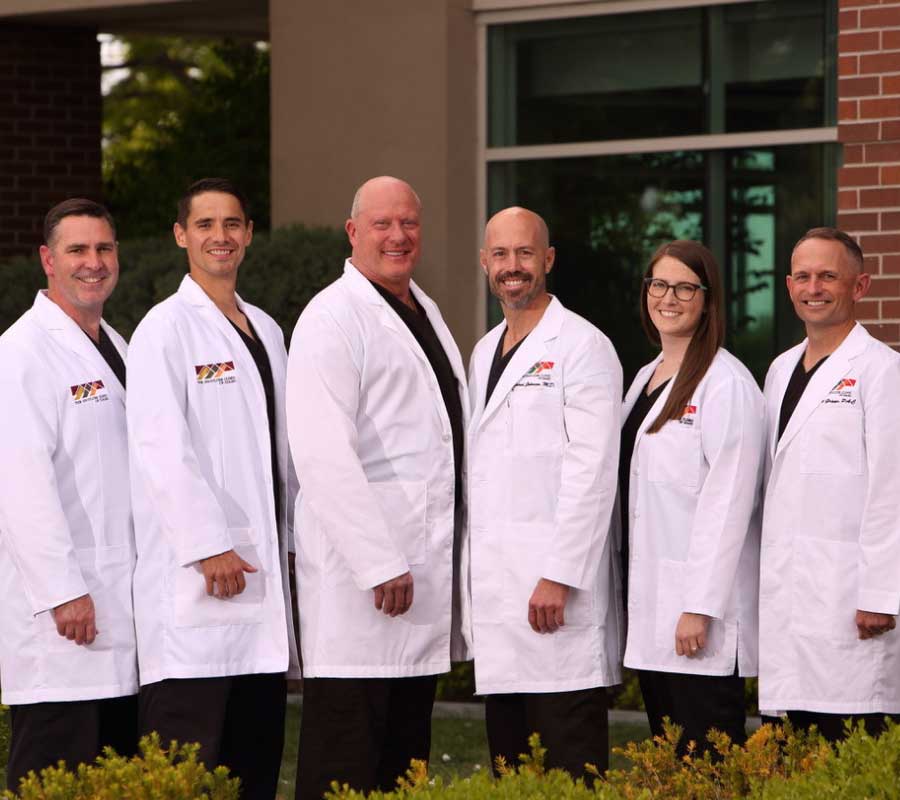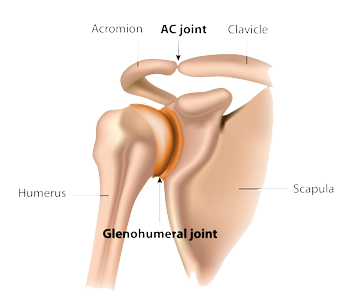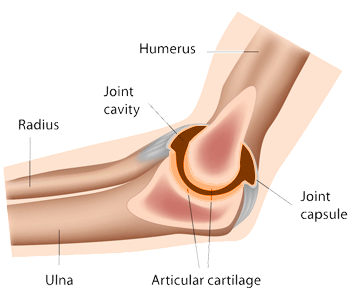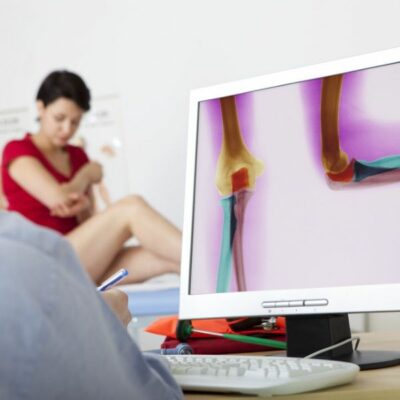Distal Biceps Tendon Repair Surgeons

Are you an athlete who participates in sports that involve heavy lifting? If so, you may experience a distal biceps tendon rupture which occurs when the tendon becomes detached from the forearm. The distal biceps tendon repair surgeons at the Shoulder Clinic of Idaho diagnosis and both surgical and nonsurgical treatment options for patients in Boise who have suffered a distal biceps tendon tear. Contact the Shoulder Clinic of Idaho team today!
What is a biceps tendon repair?
The biceps muscle, located in the front of the upper arm, attaches to the shoulder and elbow joints by strong cords of fibrous tissue called tendons. When the distal biceps tendon becomes detached from the forearm, a distal biceps tendon rupture occurs, leading to elbow pain, cosmetic deformity of the arm, elbow bruising, elbow swelling and elbow weakness. A tear of the distal biceps tendon at the elbow is uncommon and most frequently caused by a sudden injury. Individuals who suffer a distal biceps tendon tear or distal biceps tendon rupture at the elbow, may wish to consider a surgical distal biceps tendon repair as their primary treatment method.
The orthopedic specialists at The Shoulder Clinic of Idaho recommend surgery for active individuals who need to maintain normal arm strength and normal elbow function. For patients in Boise, Meridian, Nampa, and the surrounding communities of the Treasure Valley, surgery helps to restore strength and function. Biceps tendon repair surgery also prevents cramping and retraction of the ruptured distal biceps tendon further up into the arm.
Why would I need surgery for a torn biceps tendon?
Once torn, the distal biceps tendon will not grow back to the bone and heal by itself. Although other arm muscles make it possible to bend and rotate the elbow without the distal biceps tendon, they cannot fulfill all the functions of the elbow, especially the motion of rotating the forearm from palm down to palm up. This motion is called supination. Patients with distal biceps tendon tears or distal biceps tendon ruptures will experience difficulty turning a wrench, turning a key to open a door, as well as difficulty with other activities that require rotation and flexion of the arm. To return arm strength to near normal levels and to improve the cosmetic appearance of the arm, distal biceps tendon repair is recommended. For best outcomes, the distal biceps tendon rupture should be repaired soon after the tear. If the injury occurs and treatment is delayed, it can be more difficult to repair the distal biceps tendon because of scarring and retraction of the distal biceps tendon away from its normal attachment site in the forearm. In some cases, a tendon graft from somewhere else in the body (called an autograft) or from a cadaver (allograft) may be needed to rebuild and reinforce the chronically torn distal biceps tendon.
How is a distal biceps tendon repair done?
Distal biceps tendon repair is typically done through a minimally invasive surgical procedure performed on an outpatient basis. There are several different procedures to reattach the distal biceps tendon to the forearm bone, so it is important to see the orthopedic specialists at The Shoulder Clinic of Idaho to determine which method is best for each individual tear.
One method for reattaching the tendon is through a single incision in the front of the elbow. Another approach involves two incisions, one at the front of the elbow and a second incision on the side of the forearm near the attachment site of the distal biceps tendon to the forearm bone – the radius. Typically, the tendon repair involves reattaching the distal biceps tendon with stitches through holes drilled in the radius bone, or by using small metal implants called suture anchors or cortical buttons.
If it has been several months since the initial distal biceps tendon tear, or if the tendon has retracted into the arm and will not stretch enough to reach the reattachment site in the forearm, a graft may be necessary. During this type of distal biceps tendon repair, a graft obtained from cadaver tissue, or from the leg, using a hamstring tendon, may be used to rebuild the torn distal biceps tendon. The graft is sewn into the biceps muscle and then sewn back to the bone so the biceps muscle will once again flex and rotate the elbow. Although this is a more involved procedure, it can still result in excellent function for more challenging tears and retracted tendon repairs. Fortunately, the orthopedic surgeons at The Shoulder Clinic of Idaho have extensive experience in treating distal biceps ruptures, and are fellowship trained to perform this relatively uncommon and complex surgery.
What is the recovery like after distal biceps tendon repair?
All distal biceps tendon tears that have been repaired surgically will take time to heal properly. Patients in Boise, Meridian, Nampa, and the surrounding communities of the Treasure Valley can expect the following after a distal biceps tendon repair:
- Patients are placed in a sling with a soft dressing.
- Some patients – depending on the repair type and degree of retraction – may require a brace temporarily to protect the biceps tendon following the repair.
- Physical therapy will begin immediately to regain motion of the elbow and may be done by the patient themselves or guided by a physical therapist.
- After six weeks, strengthening exercises will be added to the physical therapy regimen and functional exercises to rehabilitate the arm will begin.
- Resistance exercises may be gradually added to the rehabilitation plan such as lightly contracting the biceps using elastic bands.
- Heavy lifting and vigorous exercises should be avoided for several months following surgery.
- Most patients can expect a full functional recovery between four and six months following surgery, at which time the orthopedic specialists at The Shoulder Clinic of Idaho will assess them for potential release to full, normal, and unrestricted activities.
To learn more about distal biceps tendon repair, or if you have a chronic biceps tendon tear and would like to be evaluated for this specialized surgery, please contact the orthopedic elbow specialists at The Shoulder Clinic of Idaho, serving patients in Boise, Meridian, Nampa, and the surrounding communities of the Treasure Valley.



